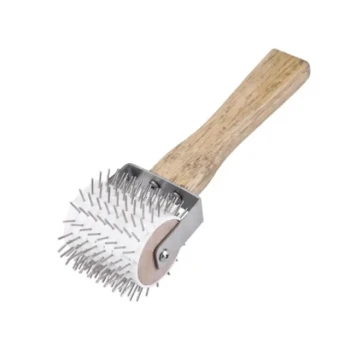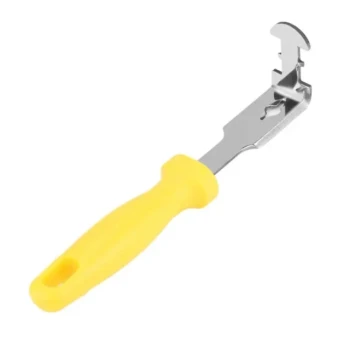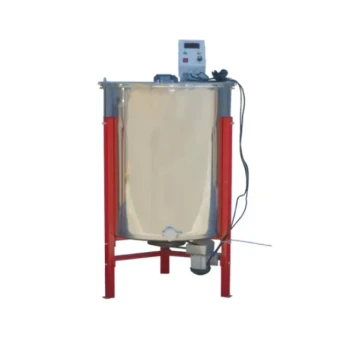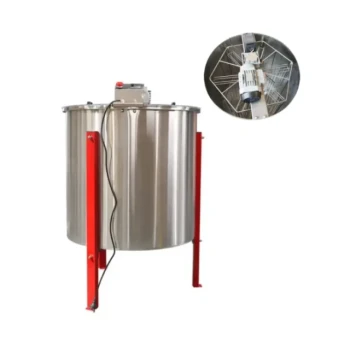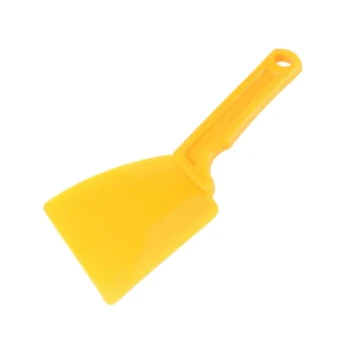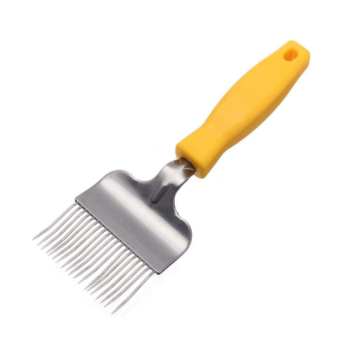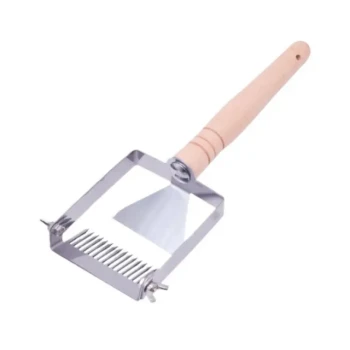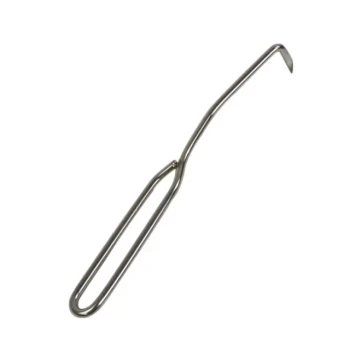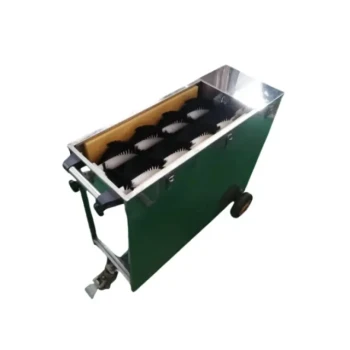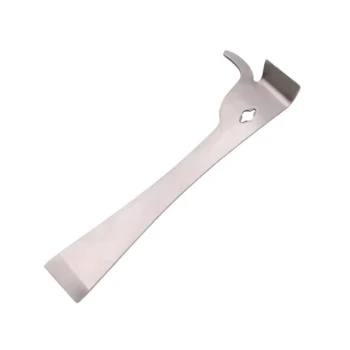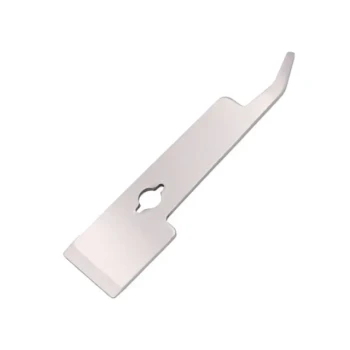At its core, the solar method for melting beeswax uses a simple, insulated device—often called a solar wax melter or solar oven—to capture the sun's energy. This device acts like a greenhouse, allowing sunlight to pass through a glass lid and converting it into heat, which is then trapped by insulated walls. This trapped heat gently raises the temperature inside the container above the melting point of beeswax (approximately 62°C or 144°F), causing it to liquefy and separate from debris.
The solar method leverages passive solar energy to provide the slow, gentle heat needed to melt and clarify beeswax safely. While highly effective and energy-efficient, its primary trade-off is a complete dependence on warm, sunny weather.
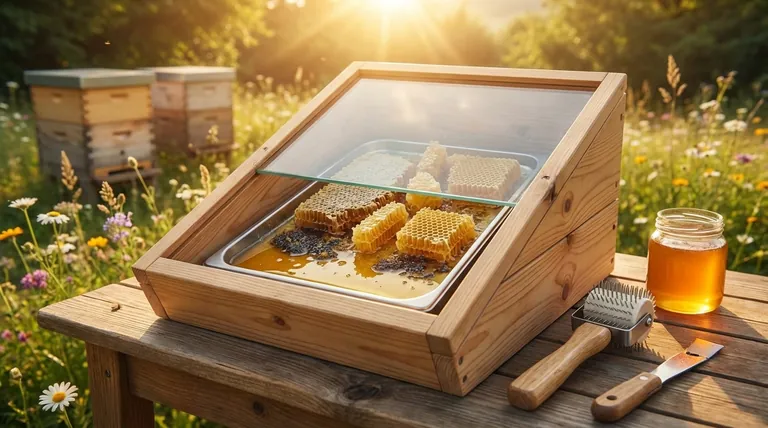
The Mechanics of a Solar Wax Melter
A solar wax melter is a brilliantly simple device designed for a single purpose: to turn sunlight into usable heat. Its function relies on two fundamental principles working in tandem.
Capturing Solar Energy
The top of the melter is a pane of glass or clear plastic. This lid allows short-wave solar radiation (sunlight) to enter the box freely.
The interior of the box is typically painted black or made of a dark material to maximize the absorption of this light energy.
Trapping Heat
Once the sunlight is absorbed by the dark interior, it is converted into long-wave thermal radiation, or heat. This heat cannot easily escape back through the glass lid, an effect known as the greenhouse effect.
Thick, insulated walls prevent this captured heat from dissipating. This allows the internal temperature to build steadily until it surpasses the wax's melting point.
Why Gentle Temperature Control is Critical
Melting beeswax isn't just about applying heat; it's about applying the right amount of heat. Uncontrolled high temperatures can ruin the wax and create significant safety hazards.
Avoiding Scorching
Beeswax is a delicate material. If overheated, it can scorch, which permanently darkens its color and can impart an undesirable burnt smell. This reduces its quality and value.
The slow, gradual heating of a solar melter makes it much easier to avoid scorching compared to direct-heat methods.
Preventing Fire Risk
More importantly, beeswax is flammable and has a flash point—the temperature at which its vapors can ignite. Using a direct flame or a stovetop without a double boiler is extremely dangerous.
A solar oven rarely reaches temperatures high enough to pose a fire risk, making it an inherently safer method for processing wax.
Practical Monitoring
Even with a solar melter, it is wise to use a thermometer to monitor the internal temperature. If it gets too hot, you can simply prop the lid open slightly to vent excess heat and regulate the process.
Understanding the Trade-offs
While effective, the solar method is not the perfect solution for every situation. Understanding its pros and cons is key to using it effectively.
Advantage: Simplicity and Cost-Effectiveness
Solar melters require no electricity or fuel, relying entirely on a free energy source. They can be purchased or easily built from common materials, making them a very low-cost option.
Advantage: Superior Wax Quality
The slow, gentle heat is ideal for clarifying wax. As the wax melts, heavier debris, honey, and other impurities sink to the bottom, while the clean wax rises to the top, resulting in a purer final product.
Disadvantage: Weather Dependency
The most significant limitation is its reliance on the weather. The method is only effective on warm, clear, and sunny days. Cloud cover, cool temperatures, or the short days of winter will prevent the melter from reaching the necessary temperature.
Disadvantage: Slower Processing Time
Compared to a crock pot or double boiler, the solar method is significantly slower. Melting a batch of wax can take several hours, depending on the intensity of the sun and the volume of material.
Making the Right Choice for Your Goal
To decide if solar melting is the right approach, consider your primary objective.
- If your primary focus is processing small batches with maximum cost-effectiveness: The solar method is ideal, as it requires no ongoing energy costs and minimal initial investment.
- If your primary focus is speed and processing large volumes on a schedule: An electric crock pot or a dedicated double boiler system will provide more consistent and faster results.
- If your primary focus is safety and achieving the highest possible wax quality: The solar method's gentle, indirect heat makes it one of the best possible choices for preserving the color and purity of your beeswax.
Ultimately, choosing the right method means matching the tool's strengths to your specific beekeeping or crafting needs.
Summary Table:
| Aspect | Solar Wax Melter |
|---|---|
| Energy Source | Sunlight (free, renewable) |
| Key Benefit | Gentle heat prevents scorching, preserves wax quality |
| Primary Limitation | Dependent on warm, sunny weather |
| Ideal For | Small-batch processing, beekeepers prioritizing safety and cost-effectiveness |
Upgrade Your Beekeeping Operations with HONESTBEE
As a commercial apiary or beekeeping equipment distributor, you need reliable, efficient tools to maximize your productivity and product quality. The gentle, energy-efficient process of solar wax melting is a perfect example of the smart solutions that drive successful operations.
At HONESTBEE, we supply the high-quality beekeeping supplies and equipment you need to excel. Whether you're looking for solar melters, extraction tools, or protective gear, our wholesale-focused operations are designed to support your business's growth and efficiency.
Ready to enhance your wax processing and overall apiary management? Contact our expert team today to discuss your specific needs and discover how our products can benefit your operation.
Visual Guide
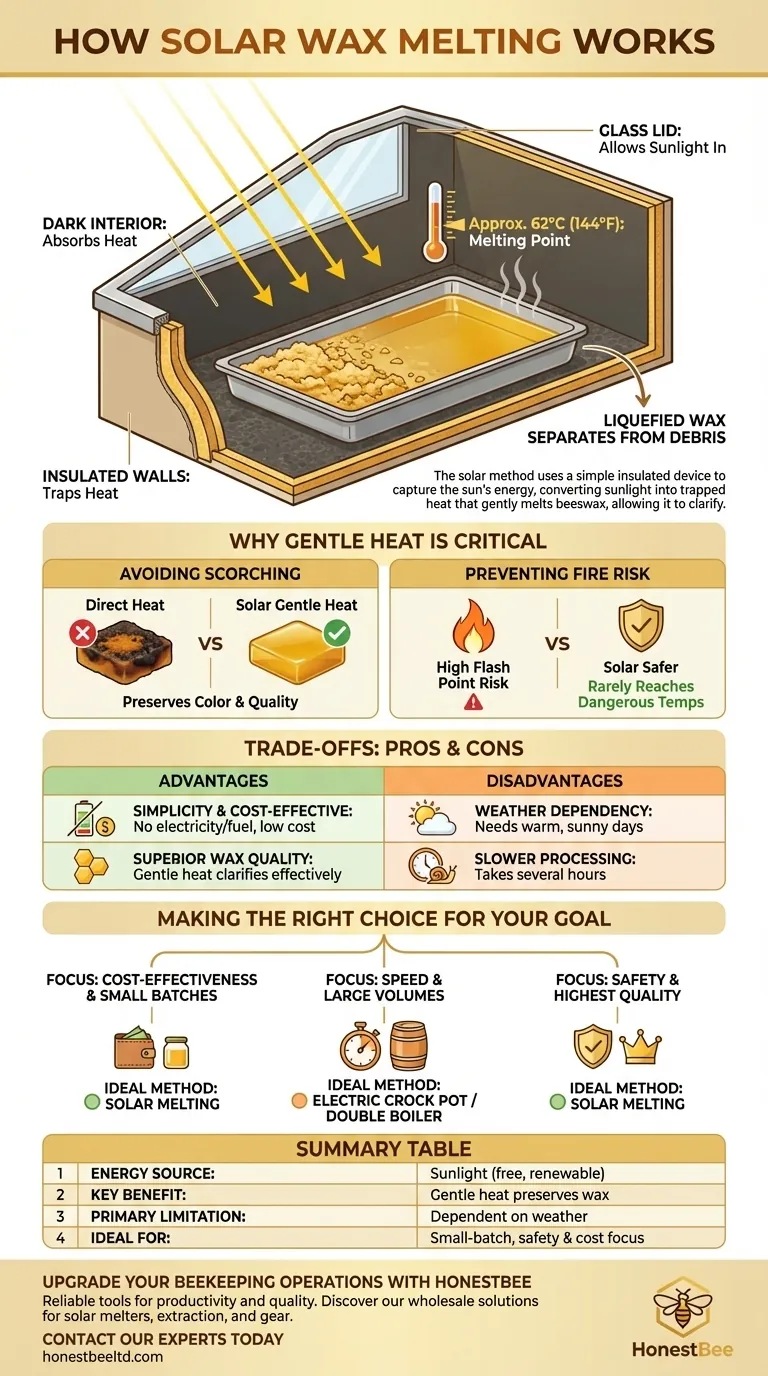
Related Products
- Professional Honey Uncapping Roller for Efficient Harvesting
- Heavy Duty Stainless Steel Frame Cleaner with Plastic Handle
- Professional 4 Frame Self Reversing Electric Honey Extractor for Beekeeping
- HONESTBEE 6 Frame Self Reversing Electric Honey Extractor for Beekeeping
- Plastic Queen Bee Catcher Marker Tube Holder for Queen Marking Bottle
People Also Ask
- What is an electric heating honey scraper and how does it work? Streamline Your Honey Harvest
- What is the advantage of an uncapping plane over an electric knife? Precision Cutting for Less Honey Waste
- What is uncapping honey? Unlock the Key Step to Efficient Honey Harvesting
- What to use to uncap honey? Choose the Right Tool for Your Apiary
- What is an uncapping roller? The Essential Tool for Bee-Centric Beekeepers
